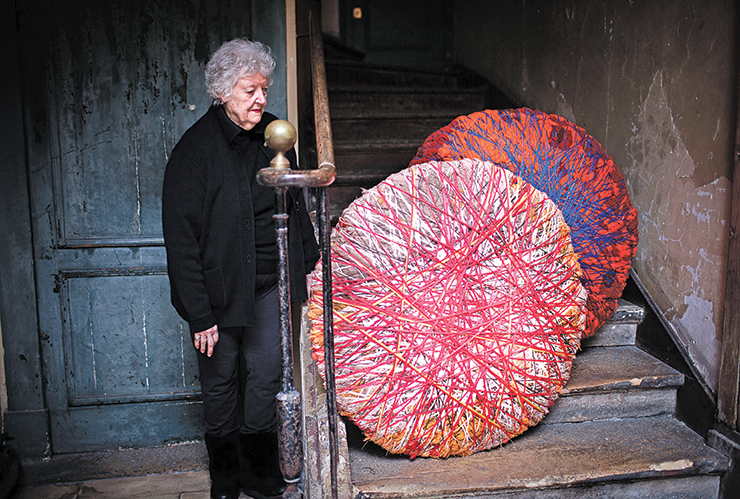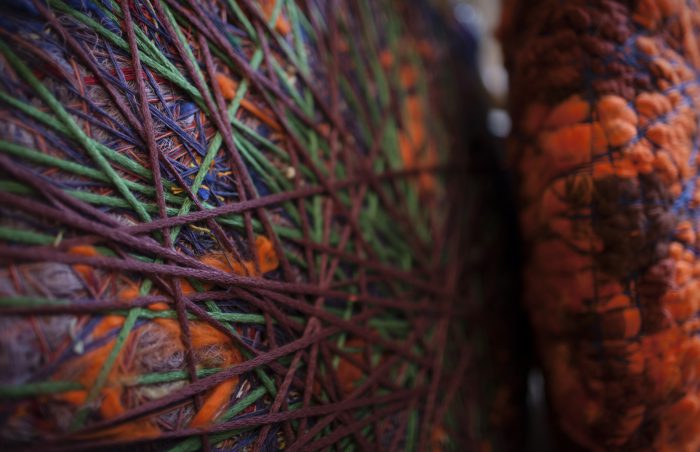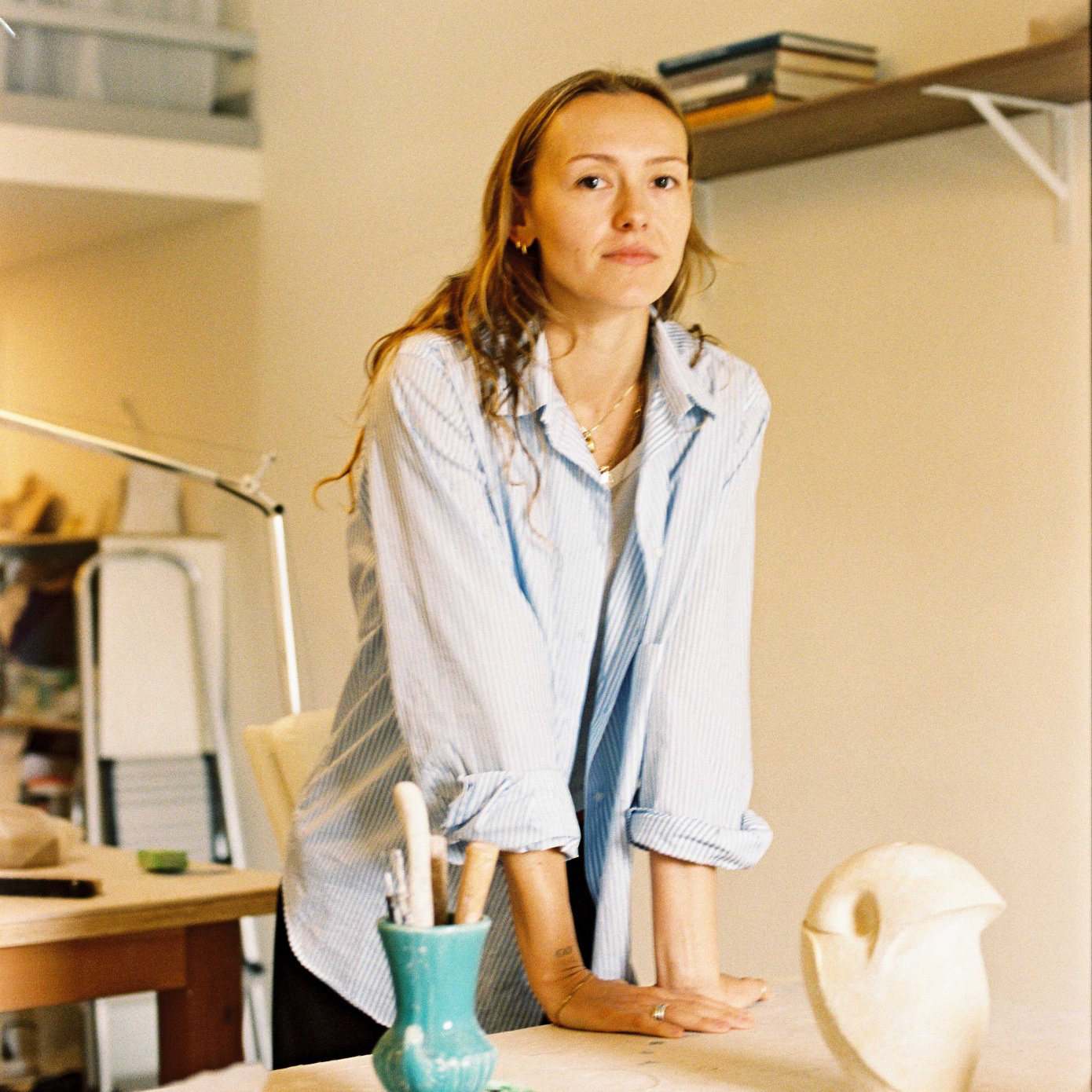
“It was easy for us to fall in love with Sheila,” says Pier Luigi Loro Piana, deputy chairman of his family’s fashion company, referring to the artworks Sheila Hicks created with Loro Piana’s trademark strands. “She’s able to create sculptures as well as pictures that transmit emotion. It’s what art is all about.” The series of linen yarn paintings—or “chainettes,” as Hicks calls them—along with her soft stone sculptures (three-dimensional disks wrapped in yarn) incorporate her practice of braiding, twisting, stitching, wrapping, revealing and enhancing warp threads, woven with the artisan fibers that highlight her signature oeuvre.
The artist’s tactile weavings and sculptures were featured this spring at her newest solo show in Italy at Galleria Massimo Minini, and the commissioned weavings for Loro Piana were displayed at the MiArt contemporary art fair in Milan in April. Hicks also recently showed at the 20th Biennale of Sydney, the Tate Modern, the Joslyn Art Museum in Nebraska, the Textile Museum in the Netherlands, Paris’ Musée Carnavalet and the Hangzhou Triennial of Fiber Art.
Hicks’ predilection for installation and textile art dates back to Yale in the 1950s, when she studied with painter and color theorist Josef Albers and George Kubler, an art historian who was an expert in Pre-Columbian and Spanish colonial work. There, the Nebraskan reconnected with knitting, weaving, sewing and embroidery, all skills she’d acquired from older female relatives back home.
A Fulbright fellowship transported Hicks to Chile, where she studied local crafts and weaving techniques, resulting in a series of miniature weavings called “minimes,” which remain relevant to her work today. After Yale, Hicks headed to Mexico before settling in Paris, where she’s lived and worked for the last 52 years.

The 1960s was a fertile period with her collaboration with furniture manufacturer Knoll. Contracts with architects and designers for commissions included rugs for the newly opened CBS Building (1965), designed by architect Eero Saarinen, and bas-reliefs installed in Kevin Roche’s Ford Foundation headquarters (1967). “When you have something like the Ford Foundation in New York that can last 40 years, it feels good that people can live with it, use it, and keep discovering it, with new generations coming and going. It must be the feeling architects have,” Hicks, 82, says about her life’s work.
The Loro Piana threads are not your run-of-the-mill textiles. They are produced from the rarest sources, the most precious and costly being the soft hairs extracted from the vicuña that roam freely in the Peruvian wild. The underfleece of Hircus goats raised in China and Mongolia yield baby and fine cashmere, while Australia and New Zealand provide the majority of merino wool. The most exotic are lotus flowers from Myanmar, whose stems are woven into hand-made yarn. “For us it’s normal to use linen, cotton, wool and mohair. It’s unusual to see somebody who considers that as raw material for art,” says Loro Piana about Hicks’ weavings.

The production of the highly coveted threads takes hours of handiwork. From the moment they’re shipped to the mill in Northern Italy, they’re combed and sorted, twisted, spun, and then wound into the finest of yarns. “We are not trying to build a name in order to use it to sell things. We try to stay very focused on what the product itself can mean for our customer,” says Loro Piano about the heritage cashmere company launched as a wool manufacturer in 1924. This fall, a new store opened in the Miami Design District, highlighting Loro Piana’s commitment to fusing art, fashion and design. For Pier Luigi Loro Piana, luxury is an allusive pursuit. “To me, actually, it is when you are looking and when you are near to quality, without compromise,” he says.




